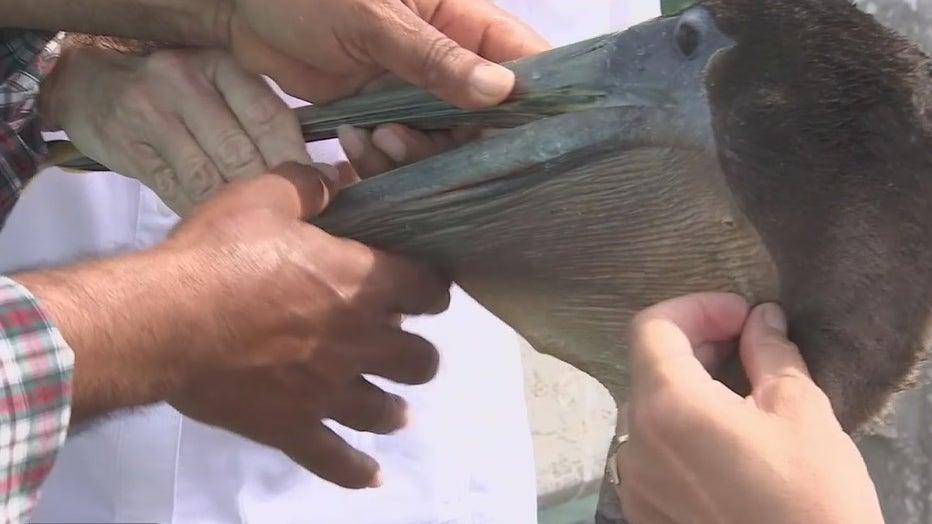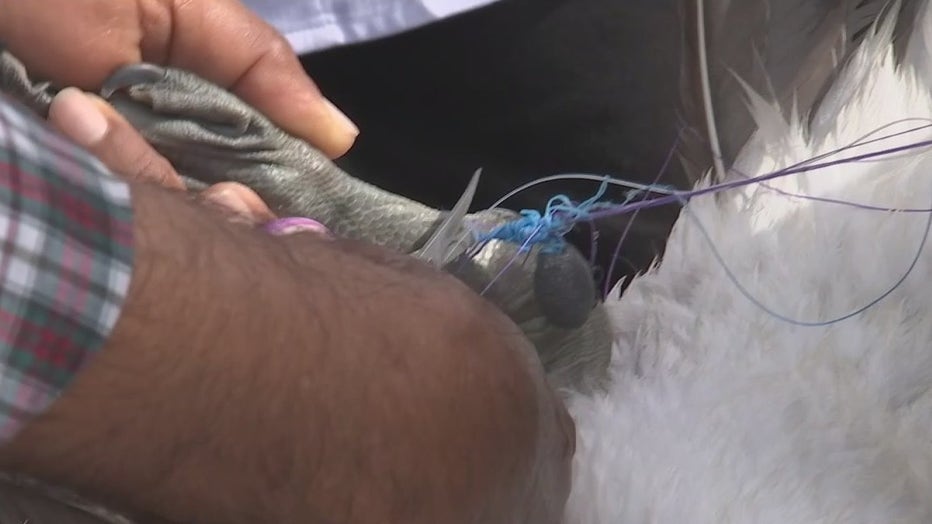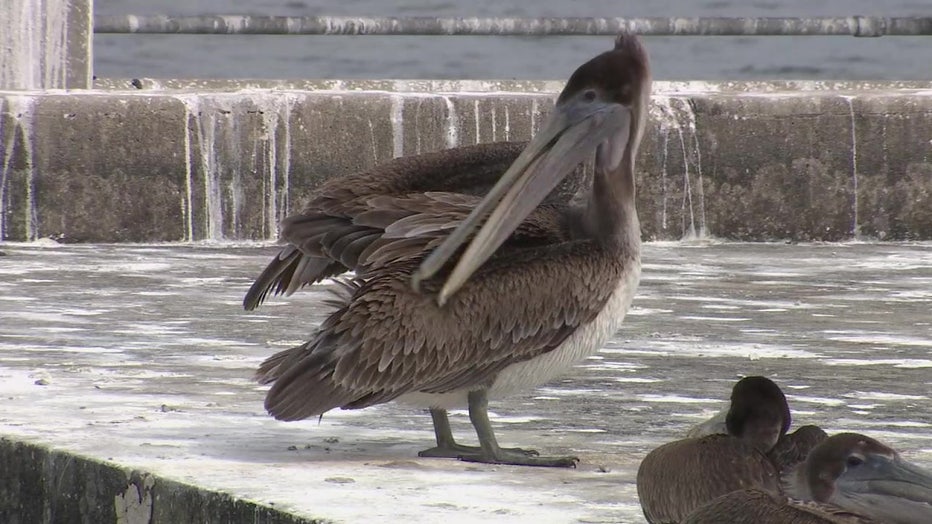Full-time job created to rescue pelicans under Skyway
Cynthia Smoot reports
ST. PETERSBURG, Fla. – At nearly two miles long, the south end of the old Sunshine Skyway Bridge is now the longest fishing pier in the world.
Since 1994, it has been open to fishing, seven days a week and 24 hours a day, and it might just be the deadliest for pelicans and other seabirds.
For years, volunteers with the rescue group Friends of the Pelicans have been rescuing birds trapped in fishing lines there. They knew it was bad, but didn’t know how bad until they hired their own rescuer to be there five days a week.
The old Sunshine Skyway Bridge fishing pier
Founder Jeanette Edwards says the numbers are staggering and they can’t keep up.
“They’re being hooked and killed every day. We rescued a hundred birds last week and a hundred birds the week before, so that’s 200 birds in two weeks. We’re not getting all the birds. We’re just getting a fraction of what’s being hooked out here,” Edwards explained.
RELATED: Good Samaritan performs zip-line rescue of entangled pelican on Skyway
She says, contrary to what most people think, pelicans aren’t going for your bait.
“They don’t see this line, they fly into it. Sometimes they get tangled, the hook comes up and hooks into them or the fisherman casts right into them, as he’s casting they’re flying by and it’s just a collision,” she said.

Rescuers remove fishing line from pelican
All kinds of seabirds are getting maimed and killed — egrets, loons, terns, seagulls — but mostly pelicans.
The day FOX 13 News visited the pier, Friends of the Pelicans volunteers had already spotted a pelican on the rocks below the interstate above. Edwards says that’s where they go to die when they can no longer fly and catch food.
Minutes later, their paid rescuer, Rahat Khan, pulled up another pelican, one with a hook in its bill and fishing line wrapped around its wing and legs. Unable to fly, it was soaking wet from being in the water, unable to preen.
Pelican rescued from Skyway Bridge
A bird rescue group sprang into action, using a zipline attached to the old Skyway Bridge fishing pier to get to the trapped bird.
Khan, along with volunteer Kim Begay, cut away the line then carefully snipped off the barb of the hook before backing it out, to prevent creating a bigger wound. The pelican also had a big hole where the pouch meets the jawline, so he’ll need stitches and rehab.
Khan says when he’s at this pier, he rescues one bird after another, all day. He says one of the problems he observes is distracted fishermen with multiple poles.
“We have people who come here with 10 fishing poles and they’re on their phones, not paying attention at all. The bird flies into them. The pole goes over the edge. The bird is floating away with a fishing pole,” Begay agreed.

Fishing wire becomes twined around pelicans’ legs, beak, and neck
Khan is an expert with a cast net, which Begay says is the only truly safe way to retrieve a hooked pelican.
The old bridge is higher than a typical pier; 18 to 22 feet from the water, depending on the tide.
“To get the bird up, you have to lift it by the hook, so lifting a pelican, which weighs four pounds by the hook which could be in his face or his pouch, is going to cause severe damage,” Begay continued.
Begay says that’s why so many fishermen do the absolute worst thing and cut the line.
“The bird’s gonna fly away with all that trailing line. They get caught on the span, on a tree. When they go to roost at night they get tangled up in the mangroves and end up hanging there and dying,” she explained.
Begay and Edwards worry about the impact on pelican populations. They say many of the juvenile pelicans they save migrate to Tampa Bay from the Mid Atlantic states, as far north as the Carolinas and Virginia.
“If they don’t have a safe place to live and learn the ropes, they’re going to die here. And that’s not counting the ones that come off Egmont Key. The first year pelicans coming off Egmont Key are dying in very large numbers. They’re just being hatched to die,” said Begay.

A pelican preens on the Skyway fishing pier
A spokesman for the Florida Fish and Wildlife Commission told FOX 13 News they’re aware of the problem and are increasing patrols and education on the pier, plus working with the Florida Department of Transportation and Department of Environmental Protection to address the problem.
Both Begay and Edwards say it’ll take unique solutions to solve the unique problems of this pier.
“We built this pier out over their water,” Edwards added. “This is their food source. This is their home. They have a right to live here and a right to a life that’s free of pain. It’s torture. It’s absolute torture what we’re doing to these birds.”
LINK: For more on the work done by Friends of the Pelicans, visit their Facebook page or website.
From 1987: Previewing the new Sunshine Skyway Bridge
WTVT takes a look at the Sunshine Skyway Bridge as its opening date nears. Originally aired February 7, 1987.
Credit: Source link































